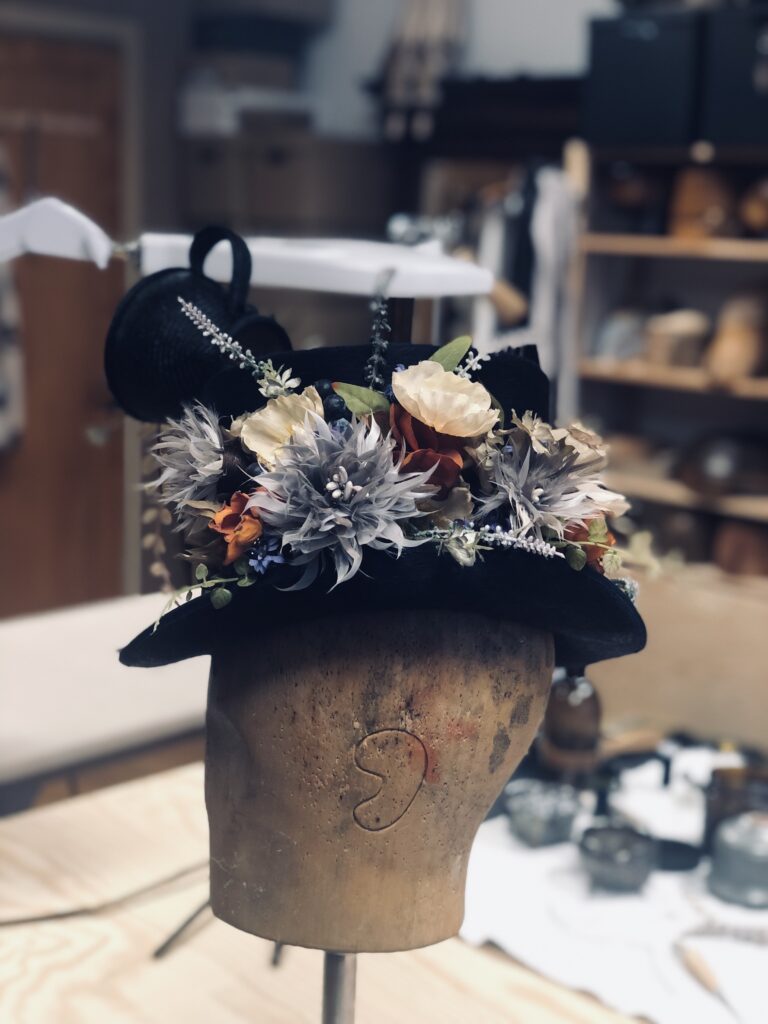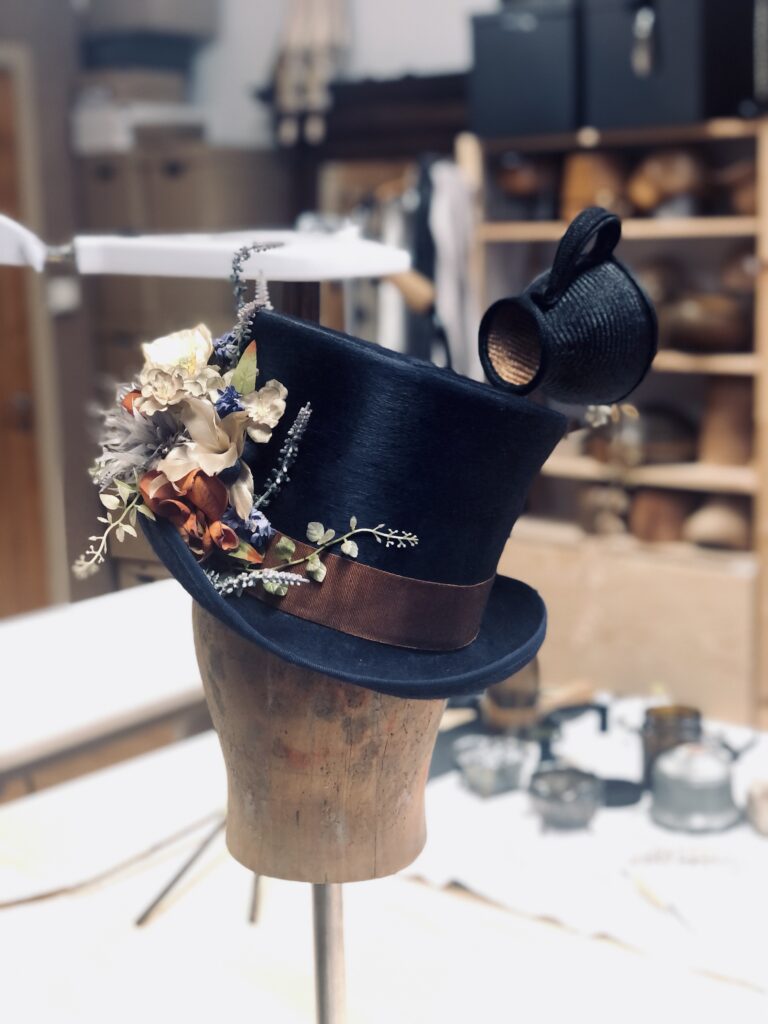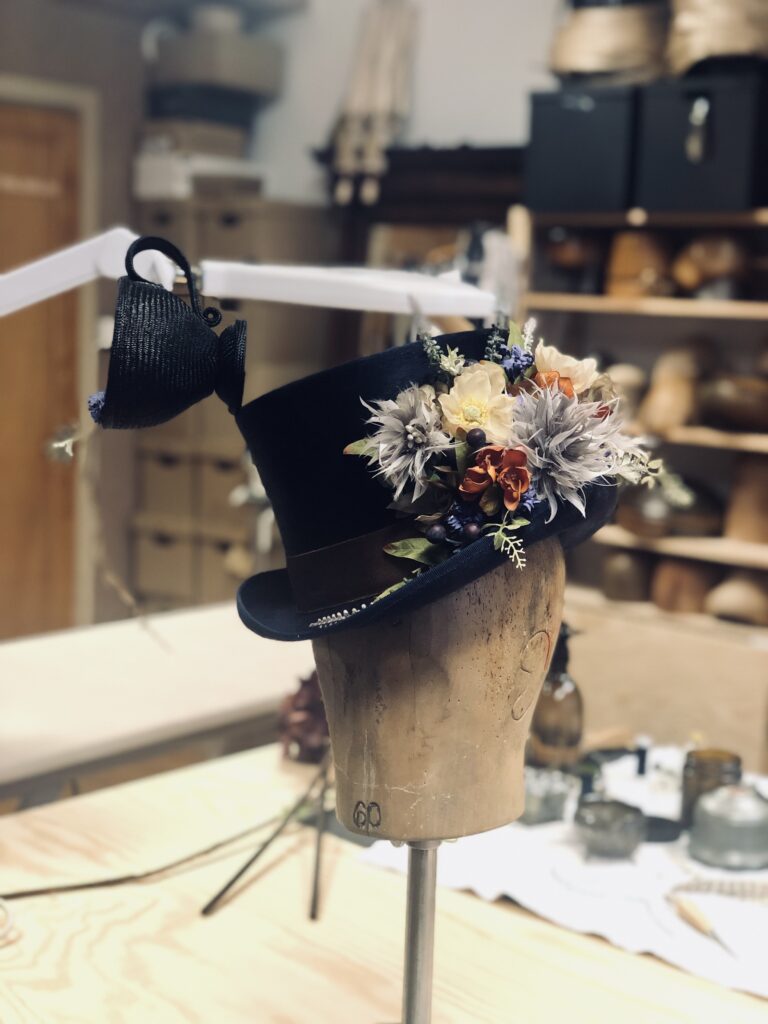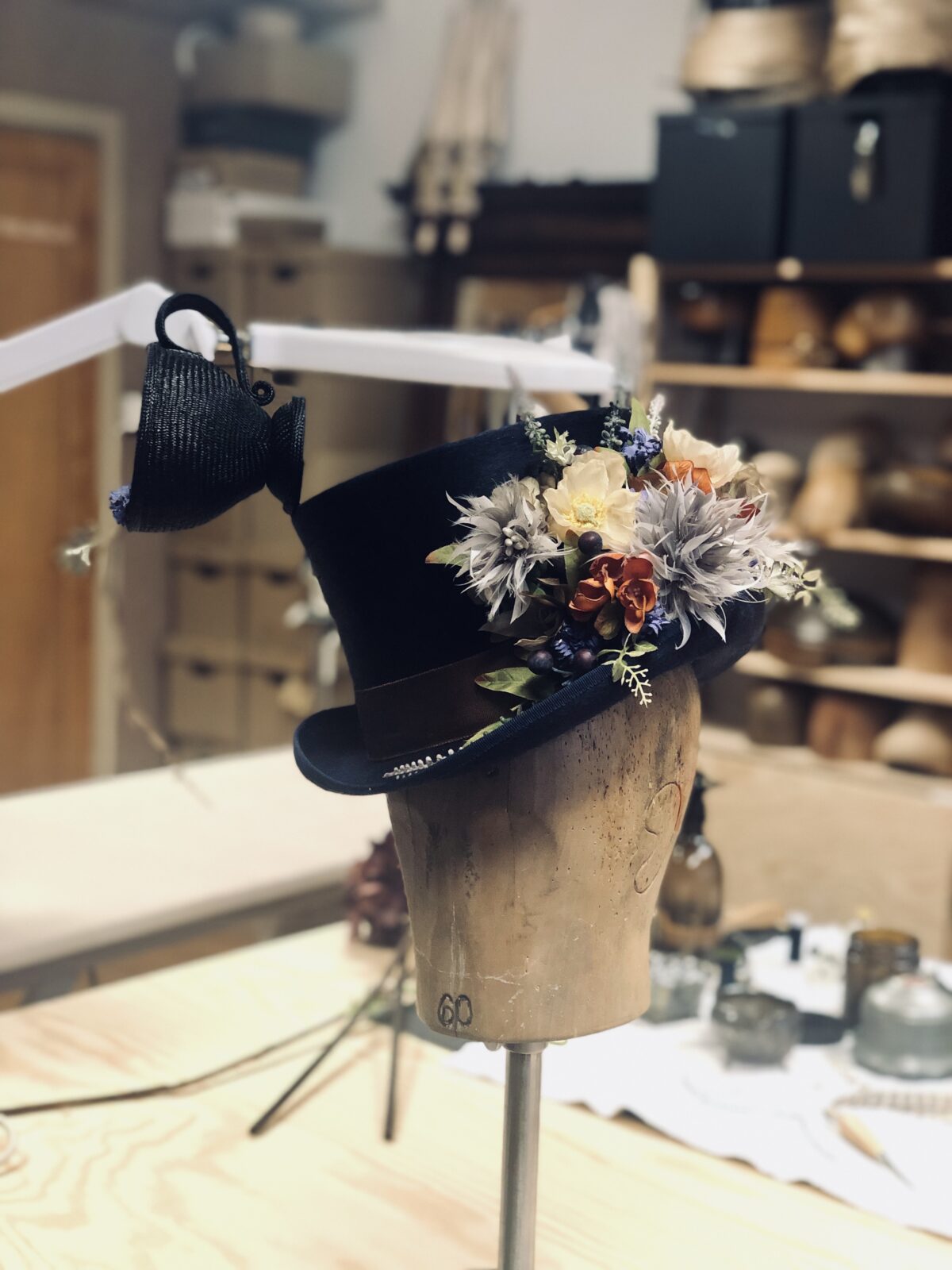I am currently working to make an exhibition with the National Theatre in Oslo, in collaboration with the Norwegian Craft Institute, showing theatrical millinery craft. Because of this event coming up, I have been asked to write a short text about the kind of work a Norwegian milliner do. These kinds of definitions can be tricky when you start reflecting on them, how they are culturally and locally shaped throughout history. However, here are some of my thoughts.
In Norway we use the word “Modist” as a tittle for a person skilled in the craft of hat making. The origin of the word I believe comes from the French word for fashion, mode, the French word for a milliner is Modiste.
Historically we also had the “hattemaker”, which is pretty much the equitant to the British word hatter. Directly translated hat maker. As the industrial revolution increased the import of men’s hats from lager factories around Europe, and the fashion has changed, the specific role of “hattemaker” has disappeared in Norway, as a consequence apprenticeship has as well. I interpret the historical role of the “hattemaker” in Norway as a craft person (most often men) making men´s hats, after the industrial revolution often in factories and at lager production scale.
I will use the word Modist and hattemaker in this post, instead of milliner and hatter, as I try to make a specific analysis regarding our craft, and the practice locally in Norway.
The historic role of the Norwegian Modist has been making women´s headwear, fashion accessories and hats. From what I have been able to gather, emerging as a craft and occupation from the end of the 1800th century. The artisans of the craft produced mostly in few numbers of each model. After the Second World War the marked has gradually declined. The last decades most often the makers make one of a kind pieces, and the focus is in mainly on hats and headpieces, less on general fashion accessories. The craft of the Modist in Norway is barely existing. With very few having a career in the craft, heavily relying on the Culture Council (for the artistic parts and possibilities of the craft), scholarships and work for film and stage, as well as some orders in the privet market. A combination many have had to jugle to be able to sustain our practice. Both the Hattemaker and the Modist have been and still are favoring natural fibres in the materials used for making, although synthetics do accrue.
The current situation of hat making in Norway is that most master both men’s and women’s headwear. We develop versatile skills in our 2 years of formal training. The training happens with a government approved and supported apprenticeship, where the apprentice learns directly, one to one, from an experienced mentor in the craft. Our training include skills like pattern making, sewing, blocking of flat woven materials like buckram with textiles, straw and felt cones and chapelines, draping, variation of finishings and decorating, considering compositions of color, proportions, shape and balance, costumer service and fittings, to mention a few. Some of the training and specialization will vary due to the master and apprentice own interest, but the main pillars of the craft is to be learned before the apprentice is approved to proceed to the test of making 3 to 4 hats/ headpieces, and by this prove they have the level of skills needed to receive the journeyman letter.
Because we are so few Modists in Norway at this point, the word is seldom used, and most people don’t know the meaning of the word, so to make it easier in conversations it is often more efficient to say, “I am a hattemaker”. This does not mean we don’t respect the specialized skills of the hatters doing high quality hand felted hats from wool (preindustrial), top hats, bicones, bowlers and other models made historically and in vast numbers, nor that we do not respect the factory work of hatters in a period of our history. It is simply a result of the changing times and need to adapt to survive as makers, as the marked and request have changed, so has the vocabulary, the education and the way we work as well. However, when I talk with people that have some understanding or I have the time to explain, I am and always will be, a proud Modist.
I am sometimes asked how many are working as a trained Modist in Norway currently. It is hard to give a precise answer. However, if I should be brave and do an educated guess, I would say we are about seven or eight individual makers over all working, some part time and some full time with the craft. In this calculation I consider the factors of whom have a formal training and how the government differentiates hobbies from a professional income. I would like to emphasize that there are more than seven trained and very skilled makers living in Norway, although they do not have a regular/ steady income from practicing the craft that the regulators consider above the scope of a hobby (the Norwegian tax laws on this corresponds to about 10% of a medium Norwegian yearly income). There are also a reasonable chance I don’t know of everyone although our community is quite smal. Getting an accurate statistic on this would be interesting.




I would love to hear the thoughts of others around this subject. If you live in another country, what is the current situation of the craft in your region? What kind of education system exist?
In Norway we don’t have much culture resembling the horse racing in the UK and Australia, nor much Nobility connected to our royals. The Norwegian church culture does not have strong norms or current traditions of wearing hats when going to church or ceremonies. How much does this kind of factors influence the possibilities you have in your community to make a living making and/ or selling hats?
Thank you for reading!
Kind regardes, Stine

